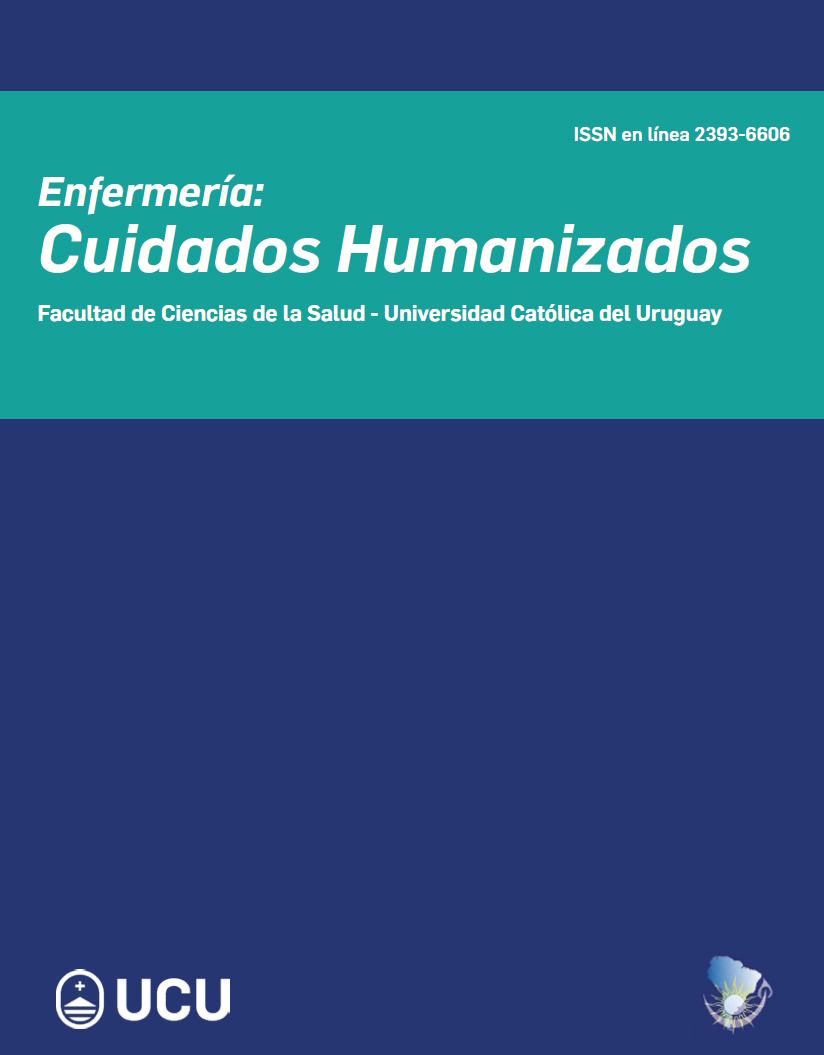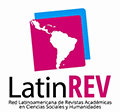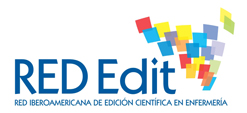Exercícios de mobilidade pélvica no trabalho de parto e parto: uma revisão de escopo
DOI:
https://doi.org/10.22235/ech.v14i2.4444Keywords:
pregnant women, exercise and movement techniques, pelvic diaphragm, labor, obstetric, complementary therapiesAbstract
Introduction: A variety of exercises and positions used in assisting women during labor are associated with reducing labor time and promoting vaginal delivery. Objective: To map and characterize the use of pelvic mobility exercises in labor and delivery care. Methodology: A scoping review, outlined according to the Joanna Briggs Institute methodology and described in line with the PRISMA-ScR checklist. The inclusion criteria covered scientific articles, editorials, research notes, dissertations, and theses published up to August 2024, with no language restrictions. The search was conducted in electronic databases, as well as in dissertation and thesis repositories. The publications were selected using the Rayyan Web software by two independent reviewers in a blinded mode, and any potential conflicts were resolved by a third reviewer. Results: Twelve publications were identified that evaluated Swiss ball exercises, aerobic exercises, walking, squats, freedom of movement and upright positions, yoga, dance, abdominal and pelvic floor muscle training. Final considerations: The described pelvic mobility exercises showed results in reducing labor time, pain, and anxiety.
Downloads
References
1. Aquino AG, Lima JSM, Lima LSV, Lima LDA, Modesto HD. Medicalização da assistência ao parto normal: Perfil de gestantes atendidas em uma maternidade de risco habitual. Enfermería Actual de Costa Rica [Internet]. 2023 [acesso em 2025 Jan 07];(44):54252. doi: 10.15517/enferm.actual.cr.i44.46727
2. Pereira VB, Reis SN, Araújo FG, Amorim T, Martins EF, Felisbino-Mendes MS. Trends in cesarean section rates in Brazil by Robson classification group, 2014-2020. Rev Bras Enferm. 2024;77(3):e20230099. doi: 10.1590/0034-7167-2023-0099.
3. Leal MC, Esteves-Pereira AP, Bittencourt AS, Domingues RMSM, Theme Filha MM, Leite TH, et al. Protocolo do Nascer no Brasil II: Pesquisa Nacional sobre Aborto, Parto e Nascimento. Cad. Saúde Pública. 2024;40(4):e00036223. doi: 10.1590/0102-311XPT0362231.
4. Lamy, Zeni Carvalho et al. Atenção ao parto e nascimento em maternidades do Norte e Nordeste brasileiros: percepção de avaliadores da Rede Cegonha. Ciênc. Saúde Coletiva. 2021;26(3):951-960. doi: 10.1590/1413-81232021263.26572020.
5. Boff NK, Sehnem GD, Barros APZ, Cogo SB, Wilhelm LA, Pilger CH. Experiência de profissionais e residentes atuantes no centro obstétrico acerca da utilização do plano de parto. Esc Anna Nery. 2023;27:e20220104. doi: 10.1590/2177-9465-EAN-2022-0104pt.
6. Cavalcanti ACV, Henrique AJ, Brasil CM, Gabrielloni MC, Barbieri M. Terapias complementares no trabalho de parto: ensaio clínico randomizado. Rev. Gaúcha Enferm. 2019;40:e20190026. doi: 10.1590/1983-1447.2019.20190026.
7. Lopes GA, Teixeira TT, Leister N, Riesco ML. Methods of induction and augmentation of labor in a freestanding birth center: a cross-sectional study. Rev. esc. enferm. USP. 2023;57:e20230158. doi: 10.1590/1980-220X-REEUSP-2023-0158en.
8. Costa AC, Prata JA, Oliveira KR, Silva CRF da, Progianti JM, Mouta RJO, et al. Liberdade de movimentos e posicionamentos no parto com as tecnologias não invasivas de cuidado de enfermagem. Cogitare Enferm. 2023;28:e84830. doi: 10.1590/ce.v28i0.84830.
9. Biana CB, Cecagno D, Porto AR, Cecagno S, Marques VA, Soares MC. Non-pharmacological therapies applied in pregnancy and labor: an integrative review. Rev Esc Enferm USP. 2021;55:e03681. doi: 10.1590/S1980-220X2019019703681.
10. Prata JA, Pamplona ND, Progianti JM, Mouta RJO, Correira LM, Pereira ALF. Tecnologias não invasivas de cuidado utilizadas por enfermeiras obstétricas: contribuições terapêuticas. Esc. Anna Nery Rev. Enferm. 2022;26:e20210182. doi: 10.1590/2177-9465-EAN-2021-0182.
11. Tully, J. Spinning babies: guia de consulta rápida / Gail Tully; tradução de Luciana Carvalho. 1a ed. São Paulo: Lexema; 2016.
12. Peters MDJ, Marnie C, Tricco AC, Pollock D, Munn Z, Alexander L, et al. Updated methodological guidance for the conduct of scoping reviews. JBI Evid Synth. 2020;18(10):2119-2126. doi: 10.11124/JBIES-20-00167.
13. Moher D, Liberati A, Tetzlaff J, Altman DG; PRISMA Group. Preferred reporting items for systematic reviews and meta-analyses: the PRISMA statement. PLoS Med. 2009;6(7):e1000097. doi: 10.1371/journal.pmed.1000097.
14. Campos EA, Narchi NZ, Moreno G. Meanings and perceptions of women regarding the practice of yoga in pregnancy: A qualitative study. Complement Ther Clin Pract. 2020;39:101099. doi: 10.1016/j.ctcp.2020.101099.
15. Melo PDS, Barbieri M, Westphal F, Fustinoni SM, Henrique AJ, Francisco AA, Gabrielloni MC. Maternal and perinatal parameters after non-pharmacological interventions: a randomised, controlled clinical trial. Acta Paul de Enferm. 2020;33(3):1-9. doi: 10.37689/acta-ape/2020AO0136
16. Flynn P, Franiek J, Janssen P, Hannah WJ, Klein MC. How can second-stage management prevent perineal trauma? Critical review. Can fam physician [Internet]. 1997 [acesso em 2025 Jan 08];43:73-84. Disponível em: https://www.ncbi.nlm.nih.gov/pmc/articles/PMC2255173/
17. Haakstad LAH, Bø K. The marathon of labour—Does regular exercise training influence course of labour and mode of delivery?: Secondary analysis from a randomized controlled trial. Eur J Obstet Gynecol Reprod Biol. 2020;251:8-13. doi: 10.1016/j.ejogrb.2020.05.014.
18. Miquelutti MA, Cecatti JG, Makuch MY. Antenatal education and the birthing experience of Brazilian women: A qualitative study. BMC Pregnancy and Childbirth. 2013;13:171. doi: 10.1186/1471-2393-13-171.
19. Prince EJ, Seshan V. The effect of selected antenatal exercises in reduction of labor pain among primigravid women: Implication for practice. JSAFOG. 2015;7(3):185-90. doi: 10.5005/jp-journals-10006-1353
20. Martínez EES, Serrano MO, Barrios NEC, Gordon GP, Cornejo FSV, García ZG. Terapia de balón para manejo del dolor y sus efectos en el parto. Alerta (San Salvador). 2022;5(1):57-63. doi: 10.5377/alerta.v5i1.11223
21. Toberna CP, Horter D, Heslin K, Forgie MM, Malloy E, Kram JJF. Dancing During Labor: Social Media Trend or Future Practice? J Patient Cent Res Rev. 2020;7(2):213–217. doi: 10.17294/2330-0698.1723.
22. Tupler J. Exercises for second stage. Midwifery Today Int Midwife [Internet]. 2000 [acesso em 2025 Jan 08]; (55):25-7. Disponível em: https://pubmed.ncbi.nlm.nih.gov/11189560/
23. Gallo RBS, Santana LS, Marcolin AC, Duarte G, Quintana SM. Sequential application of non-pharmacological interventions reduces the severity of labour pain, delays use of pharmacological analgesia, and improves some obstetric outcomes: a randomised trial. J Physiother. 2018;64(1):33–40. doi: 10.1016/j.jphys.2017.11.014.
24. Joanna Briggs Institute (JBI). Critical Appraisal Tools. Adelaide [Internet]: 2006. [acesso em 2025 Jan 14]. Disponível em: https://jbi.global/critical-appraisal-tools/
25. Mielke KC, Gouveia HG, Gonçalves CA. A prática de métodos não farmacológicos para o alívio da dor de parto em um hospital universitário no Brasil. Av Enferm. 2019;37(1):47-55. doi: 10.15446/av.enferm.v37n1.72045
26. Cevik SA, Karaduman S. The effect of sacral massage on labor pain and anxiety: a randomized controlled trial. Jpn J Nurs Sci. 2020;17(1):e12272. doi: 10.1111/jjns.12272.
27. Klein BE, Gouveia HG. Utilização de métodos não farmacológicos para alívio da dor no trabalho de parto. Cogitare Enferm. 2022;27:e80300. doi: 10.5380/ce.v27i0.80300
28. Costa ASP, Oliveira Jr PLD, Alves AEO de A. Fisioterapia na recuperação muscular de diástase abdominal em puérperas. REASE. 2021;7(11):577–597. doi: 10.51891/rease.v7i11.3091
29. Bassoli RM. Yoga para gestantes. 4a ed. Campinas, São Paulo. Ed. Átomo; 2019.
30. Aguiar BM, Silva TPR da, Pereira SL, Sousa AMM, Guerra RB, Souza KV de, et al.. Factors associated with the performance of episiotomy. Rev Bras Enferm. 2020;73:e20190899. doi: 10.1590/0034-7167-2019-0899
31. Darnal N, Dangal G. Maternal and Fetal Outcome in Emergency versus Elective Caesarean Section. J Nepal Health Res Counc. 2020;7;18(2):186-189. doi: 10.33314/jnhrc.v18i2.2093.
32. Ministério da Saúde. Diretrizes metodológicas: elaboração de diretrizes clínicas. 1ª ed. Eletrônica. Brasília: Brasil [Internet]. 2023 [acesso em 2025 Jan 14]. Disponível em: https://www.gov.br/conitec/pt-br/midias/artigos_publicacoes/diretrizes/
33. De Gasquet B. Mon cours de préparation à l'accouchement: la méthode de Gasquet pour accoucher de manière naturelle et physiologique. Paris: Marabout; 2019.
Published
How to Cite
Issue
Section
License
Copyright (c) 2025 Enfermería: Cuidados Humanizados

This work is licensed under a Creative Commons Attribution 4.0 International License.

















